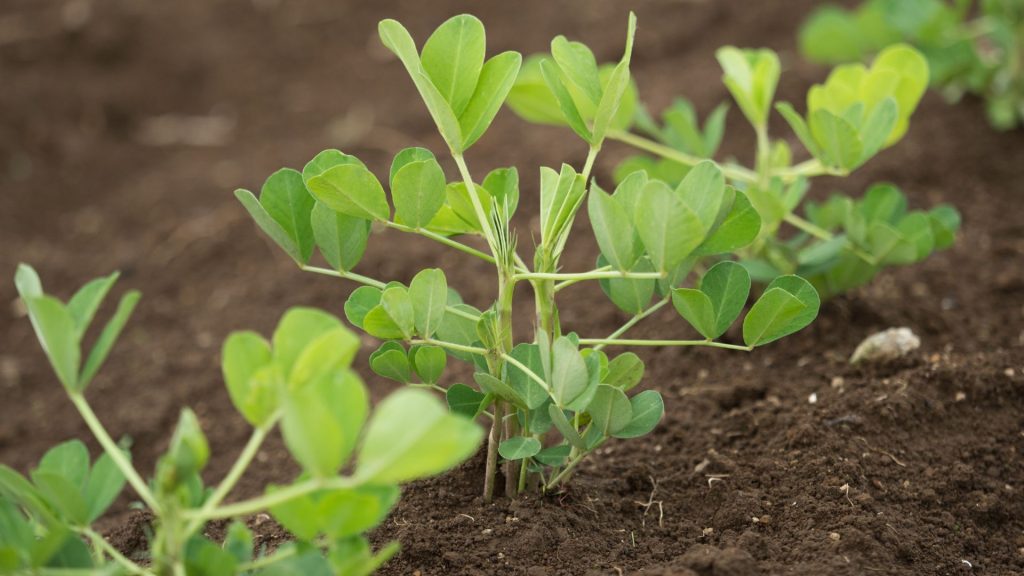A very popular ground crop cultivated peanut (Arachis hypogaea), also called groundnut, is a representative of the genus Peanuts of the legume family. Scientifically speaking, they are legumes, not nuts. They are native to South America, where they were popular even when the mainland was not yet discovered by Columbus. The Spanish conquistadors brought this crop to Europe, and it came to Africa later thanks to the Portuguese, where peanuts became very popular since they not only have nutritious properties but also grow well on scarce soils.
Later, this culture was brought by slave traders to North America. It has been considered the food of the poor for many centuries in a row, and therefore farmers did not pay much attention to this plant. However, everything changed in 1903, when George Washington Carver, an American agrochemist, was able to invent more than three hundred products from such a plant, namely: cosmetics, dyes, laundry soap, drinks, medicines, printing ink, pest control, etc. Today we are going to tell you how to grow peanuts and how to care for them.
What Climate Do Peanuts Grow In
Peanuts grow best in temperatures as low as 30 °C. The plant can still be grown at lower temperatures, with the lower limit of the temperature spectrum being 13 °C. At this or colder temperatures, the plant would not grow.
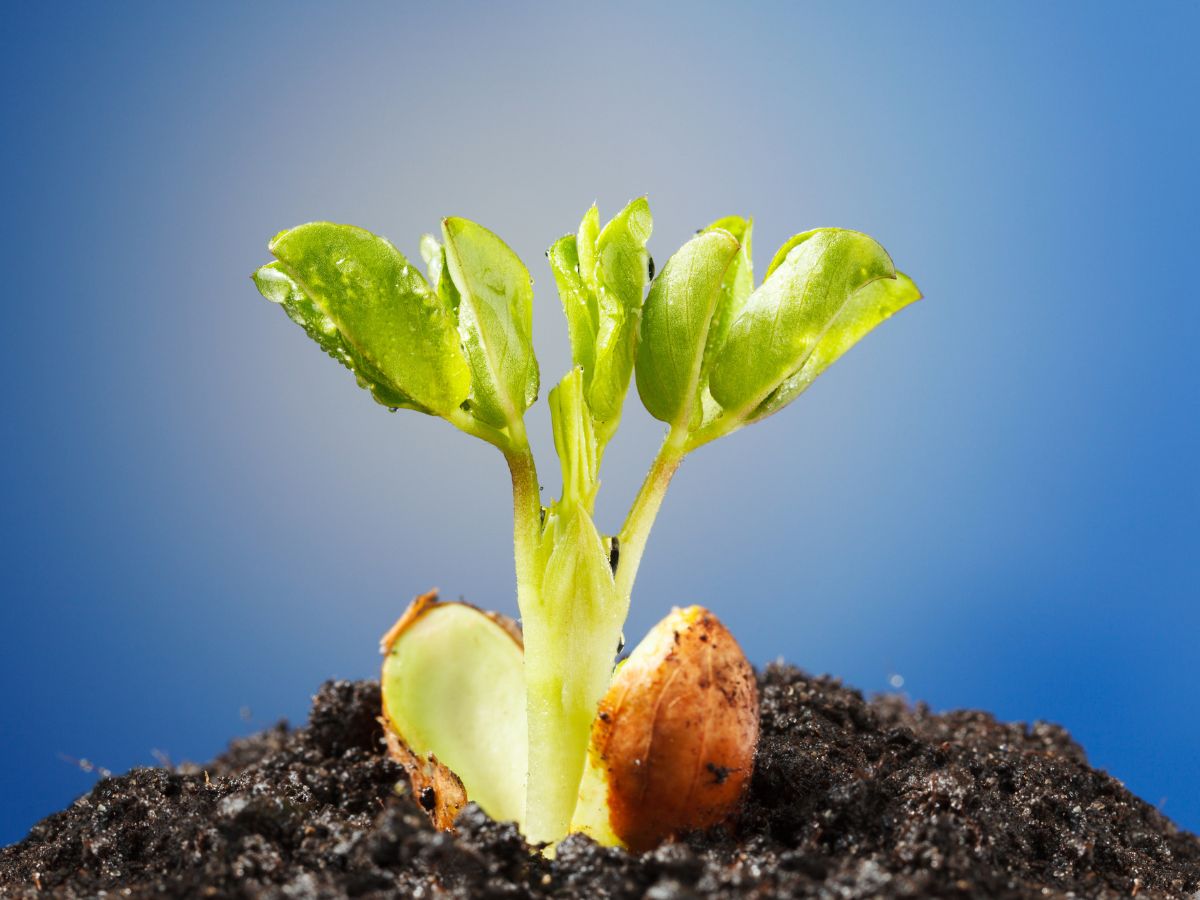
How to Sprout Peanuts before Planting
A glass of ripe, raw large peanuts must be rinsed thoroughly and transferred to a large jar. Then pour the nuts with three glasses of cool water and leave them for 12 hours away from direct sunlight in a room with active air circulation at a temperature of 21 °C. After soaking, rinse and dry the seeds. After 12 hours, you need to repeat the soaking procedure. The seeds would begin to germinate after three cycles of washing and drying.
How to Plant Peanuts in an Open Area
Growing peanuts is carried out in open areas with intense lighting without the slightest hint of shadow from buildings or other plants. The plants grow at temperatures above 20 °C. If the temperature drops literally by two degrees, plant growth stops.
The plants would take root best if tomatoes, cucumbers, or potatoes are grown in the garden before them, especially if these crops were well fertilized with organic matter during their growth. It is not recommended planting a peanut in areas where legumes previously grew, as common diseases and pests can damage it.
When to Plant Peanuts
The plant prefers a long, warm growing season and is usually planted from mid to late spring (after the threat of frost has passed) to mid-summer. Keep in mind that return frosts in spring are bad for peanuts. You can use peanuts purchased from a store or market as seed, but not fried, candied, or salted.
Soil for Peanuts
Soil for peanuts should be moist, light, and neutral, with a high content of humus, magnesium, and calcium-black soil or sandy loam. The culture does not tolerate saline soils, and acidic soils must be limed before planting plants.
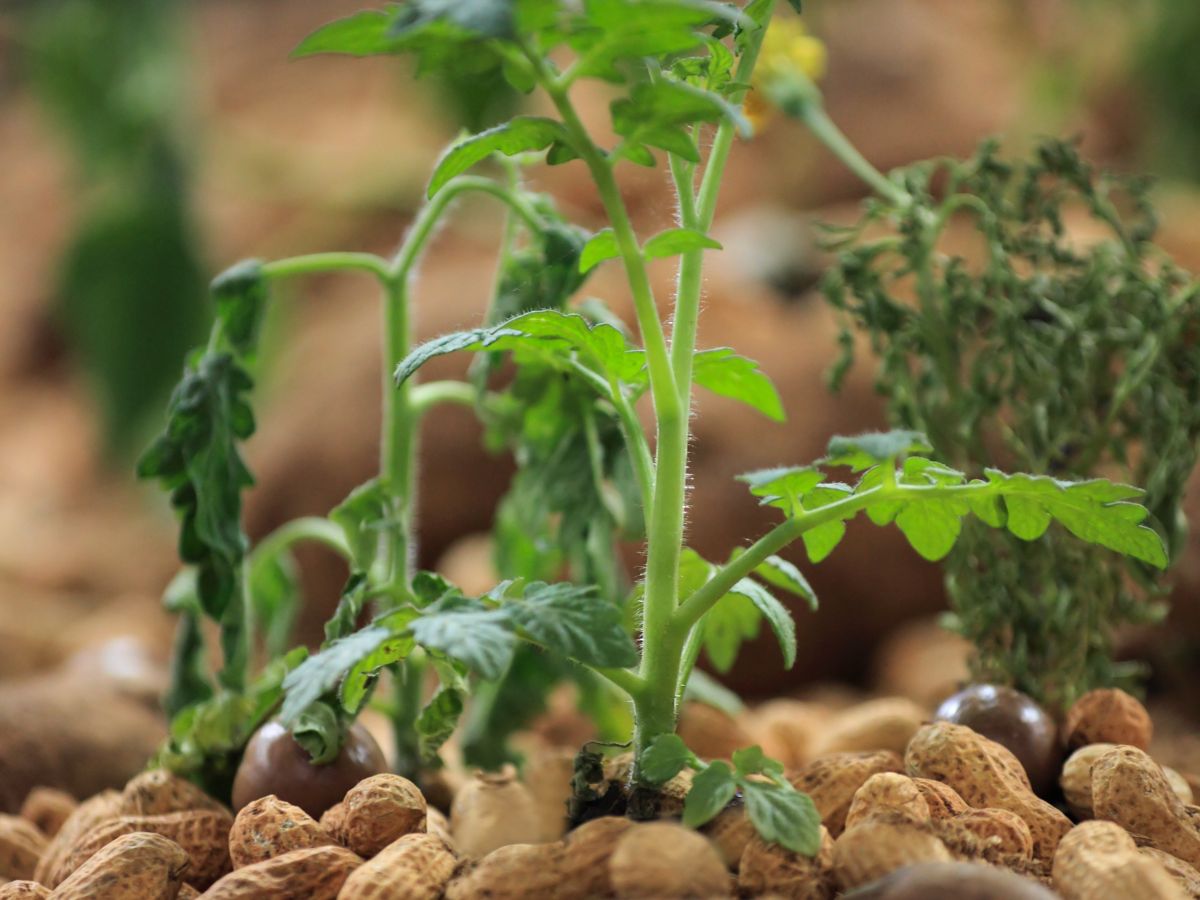
How to Plant Peanuts?
How deep to plant peanuts? Plant them in holes 10 cm deep. How far apart to plant peanuts? They should be staggered at a distance of 50 cm from one another. The gap between the rows is left within 25-30 cm. After planting the seeds, the bed is watered abundantly from a hose through a showerhead under low pressure so as not to erode the soil.
Water it when the topsoil dries up. During flowering, it is watered abundantly, once or twice a week in the morning; after flowering, it can be sprayed in the evening every two days. If it rains during the ripening period, cover the bed with plastic. And in a drought, it is best to sprinkle plants, but if this is not possible, then water the plants along the furrows in the aisles. In total, 4-5 waterings are carried out per season.
How Long Does It Take to Grow Peanuts?
Unlike most plants, peanuts flower above ground and bear fruit underground. From planting to harvesting, the cultivation cycle for plants takes on average 4 to 5 months, depending on the variety.
When to Dig Peanuts
The period of growth and ripening of peanuts from the time of sowing the seeds of the plant in the ground takes 130-165 days. The term depends on the soil, climatic conditions, and the variety of peanuts. Harvest time is mid-autumn, before the first frost.
How to know when to harvest peanuts:
- the leaves of the plant turn yellow, dry out;
- the plant looks lethargic, giving the impression that it is sick.
When such changes become noticeable, you need to stop fertilizing. Watering is also reduced to a minimum so that the land does not dry out. During this time, the beans underground ripen. If you start digging the bushes right away, you can see underdeveloped fruits. Therefore, it is imperative to adhere to the recommendations. Arm yourself with a shovel and collect peanuts before the first frost. If the nuts lie in the frozen soil, they would accumulate bitterness.
Growing Peanuts in Containers
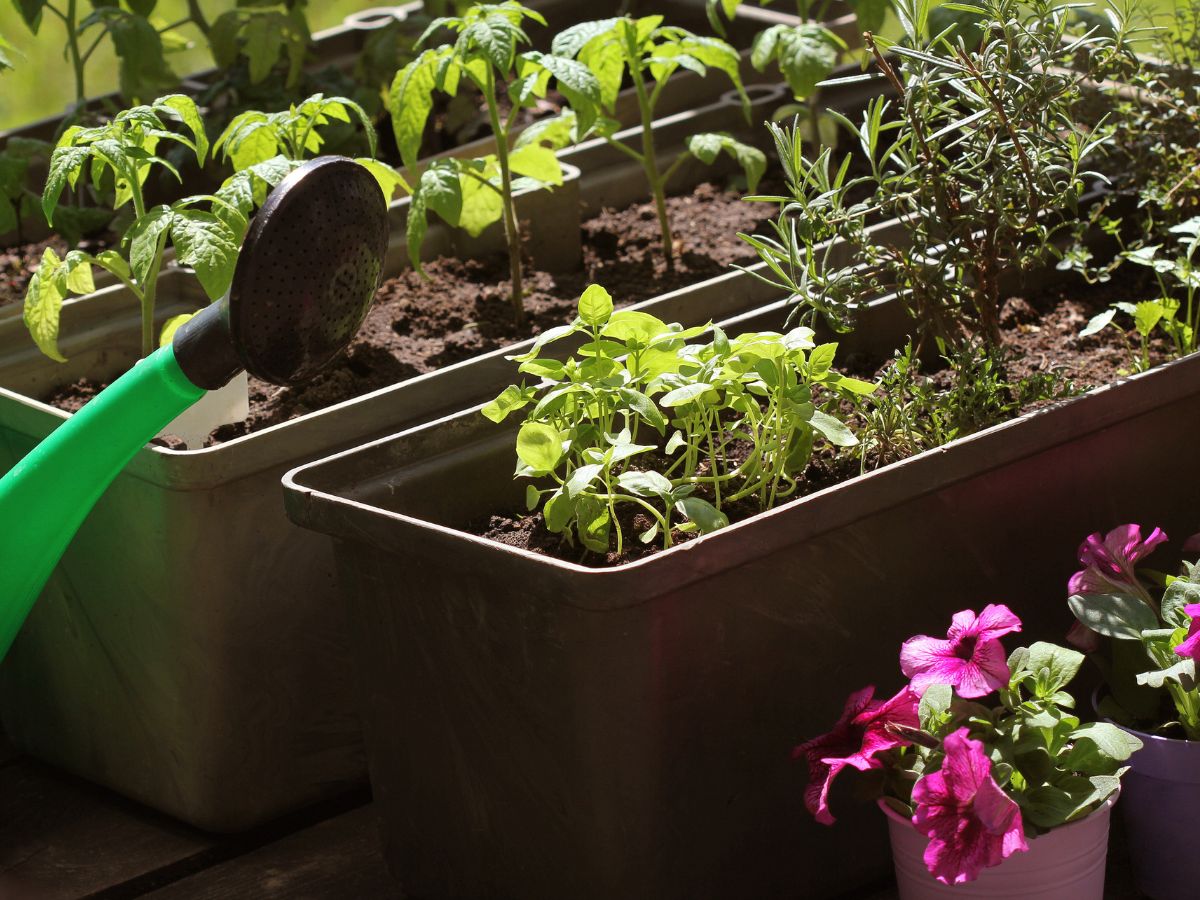
Choosing a pot and the best soil for growing peanuts
For the comfortable growth of peanuts indoors, you need to choose long deep pots. You need to pour no more than half of the soil into the pot. So the developed root system of the plant would grow comfortably.
You need to plant them in soil rich in calcium and magnesium with added phosphorus fertilizers, for example, nitro phosphate. The plant would not grow in acidic soil (it can be “diluted” with lime powder or chalk) and in saline soil.
Place the pot in a sunny spot and rotate it every couple of days to keep them growing evenly. Water regularly to keep the potting mix slightly moist. Watch for yellow flowers about six weeks after germination. Regular watering is even more important during flowering.
Peanut Companion Plants
The neighbors of peanuts should have the same soil and sun conditions, but should also have a lot of calcium, a nutrient that promotes healthy plants.
Vegetables
Some land crops such as beets and carrots can be ideal plants for peanuts. Potatoes are another good terrestrial plant with similar growing needs. Growing onions and other members of the Allium family should be avoided.
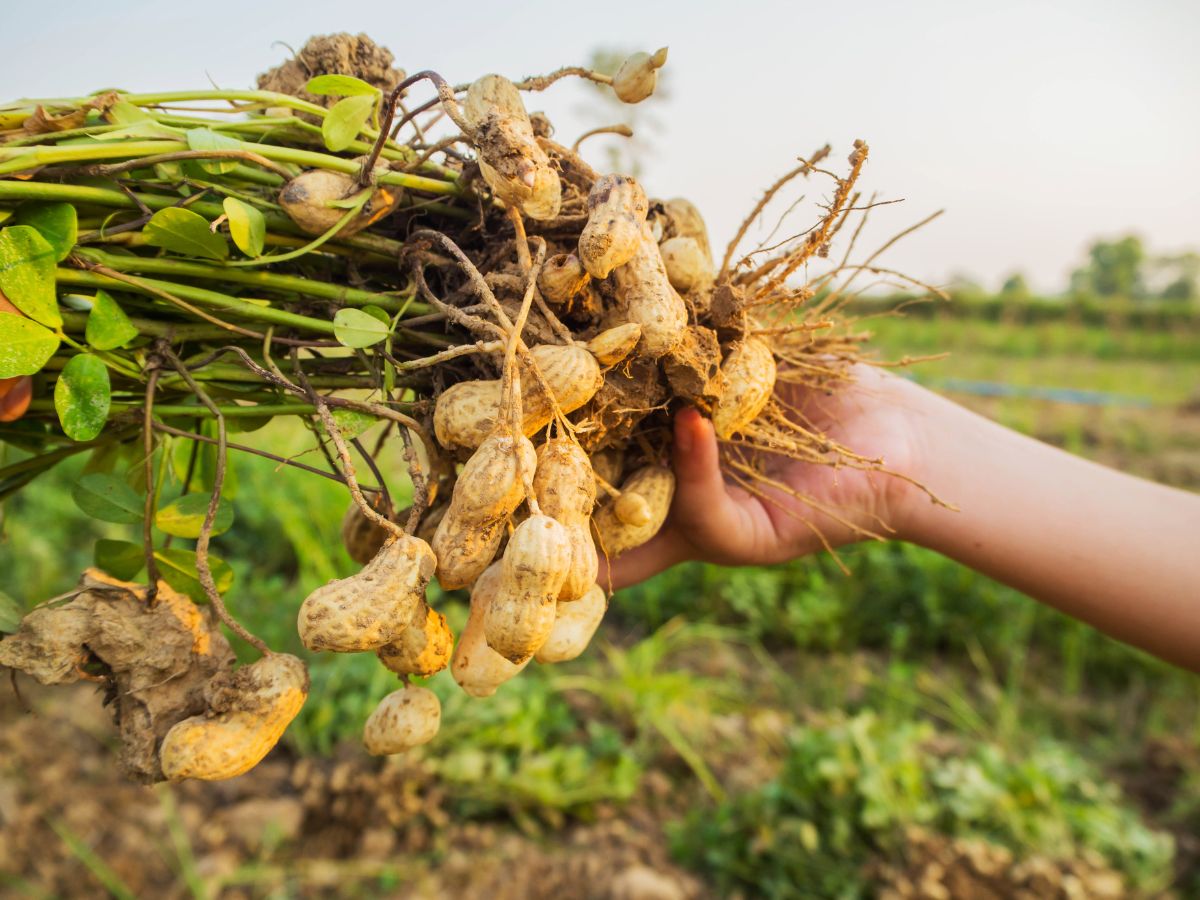
Herbs or Flowers
Many herbs have unique pest control properties and also increase pollinator numbers during their bloom period. Some flowers also have these benefits when planted near food crops. Marigolds and nasturtiums are two classic examples of flowering companions with pest-repelling properties and pollinator charm.
Herbs such as rosemary, savory, and tansy have some ability to attract beneficial insects and scare away harmful insects. This is due to the potent aromatic oils in the leaves of the plants. Moreover,they have the same growing needs as peanuts and would grow in the same garden bed.
Any companion plants near peanuts should ideally not cover the plants and reduce their exposure to the sun.
Beneficial Features
Peanuts can significantly reduce the risk of cardiovascular ailments. Therefore, to prevent heart disease, it is recommended to eat beans from time to time. The beneficial effect, in this case, is associated with the rich content of potassium in peanuts-the main “heart” trace element.
In addition to potassium, peanuts also contain phosphorus, selenium, zinc, calcium, which are also useful trace elements for the body. There is a lot of magnesium, which helps to keep blood pressure normal.
Doctors recommend using peanuts for people with gastritis, ulcers, as well as for various problems with the nervous system. With regular consumption, you can significantly strengthen the immune system, improve hearing, memory, and attention. The composition of peanuts contains a lot of fiber, which removes toxins from the intestines. But remember that even the most useful product, if used in exorbitant quantities, can be harmful, therefore, it is necessary to observe the measure in the use of peanuts, especially for those who have health problems.


